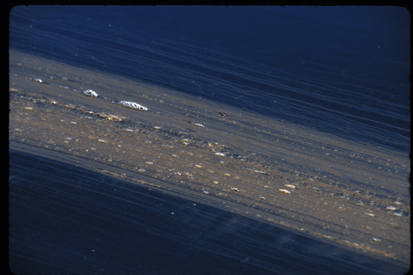- Blog
- Oceans
- Cruise Ships
- Gross reminder that cruise ships need to shape up
Gross reminder that cruise ships need to shape up

Donate Now!
Your contribution will benefit Friends of the Earth.
Stay Informed
Thanks for your interest in Friends of the Earth. You can find information about us and get in touch the following ways:
A cruise ship room tag from a Holland America vessel was found washed up with a concentrated amount of sewage and various plastic on Pond Beach in Nahant, Massachusetts last Saturday. The washed up waste was described as a “mass of rubber gloves, dental floss, contraceptive and personal hygiene items, and a urinal cake … huge masses of brownish foam … toilet paper and other debris … within the foamy mass.” While the source of the sewage will likely never be confirmed, many in Nahant believe a cruise ship or some other vessel dumped its sewage and other waste unlawfully.
Typically, cruise ships are allowed to discharge sewage treated by a Marine Sanitation Device (MSD) within three nautical miles of U.S. shores. Thankfully, New England has said “no” to any type of near-shore sewage discharge from ships by creating what are known as No-Discharge Zones—areas where everything from cruise ships to recreational sailboats have to hold their sewage until they can pump out at the dock or discharge when further out to sea. The waters off of Revere, Saugus, Lynn, Nahant, and Swampscott have been a No-Discharge Zone since 2009.
Unfortunately, this no-discharge area designation didn’t protect Pond Beach, Dorothy Cove and the surrounding Massachusetts Bay waters from sewage last weekend. Local officials reported the pollution to the U.S. Coast Guard in the region and also shared the knowledge that a cruise ship leaves Boston Harbor and travels through Massachusetts Bay every Friday. The Coast Guard responded that without an eye witness account or detailed information of a possible release, the options for catching the perpetrator or any enforcement action are limited.
The cruise industry publicly states that it doesn’t discharge close to shore but without oversight in the form of monitoring and reporting, neither the public or government officials can know if what the industry says publicly is true in practice. This distressing discovery in Massachusetts is a reminder that the cruise industry needs to keep a close eye on its discharges, especially while close to shore. It also sends a message to the U.S. EPA that the standards for ship sewage treatment need to be updated as soon as practical.
To choose a greener cruise check out Friends of the Earth’s Cruise Ship Report Card.
To read more about cruise ship pollution and why stronger rules are necessary take a look at our report – Getting a Grip on Cruise Ship Pollution.
Image credit: Sewage on the water in Puget Sound – Fred Felleman
